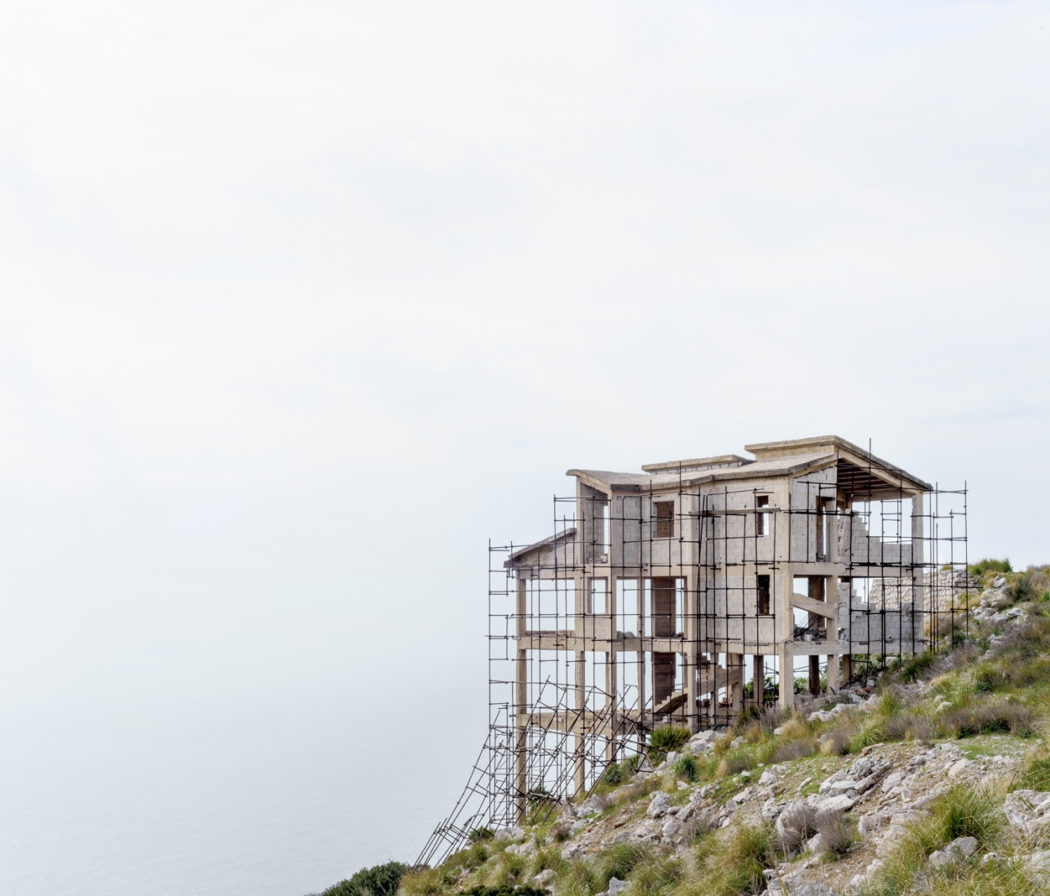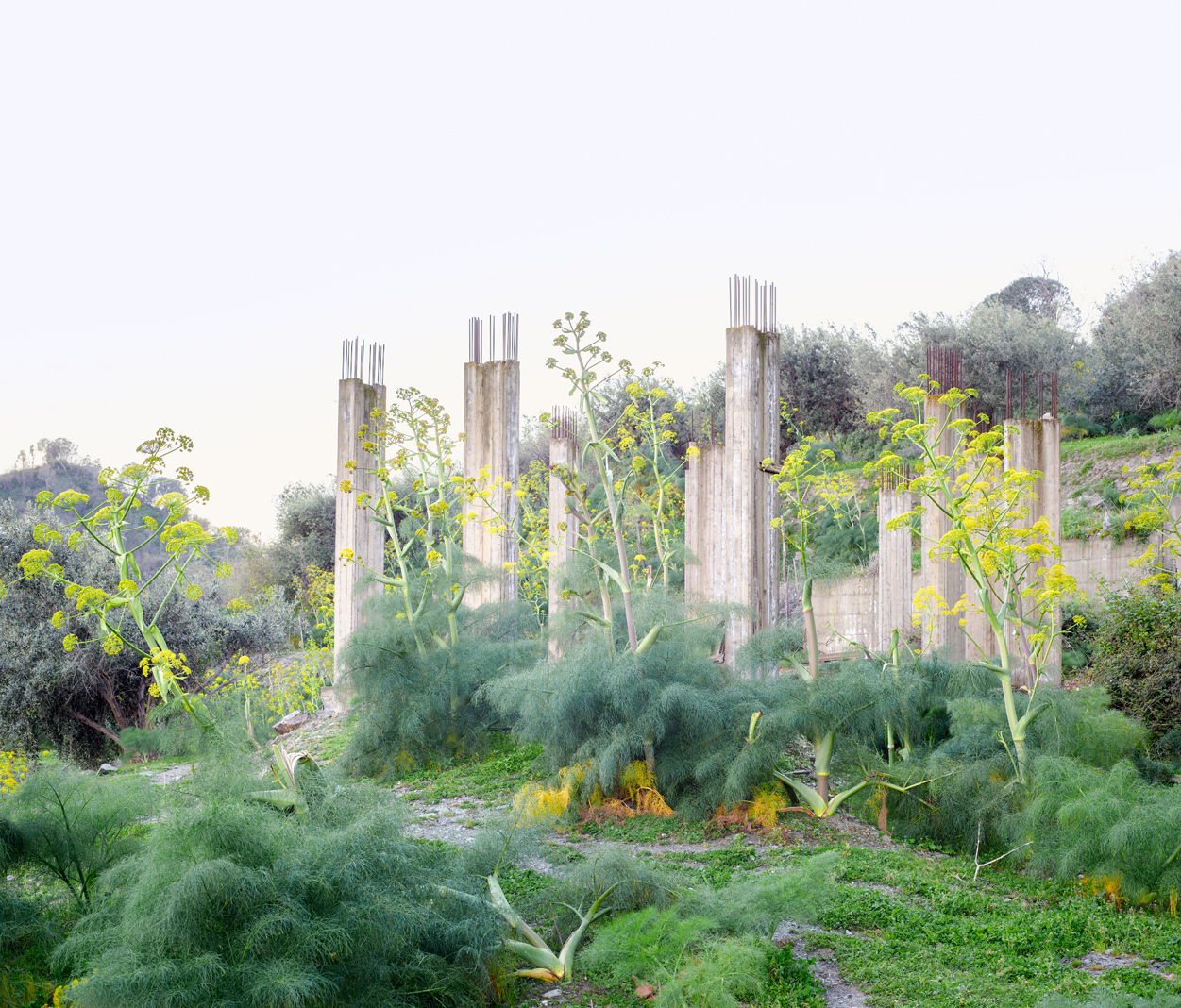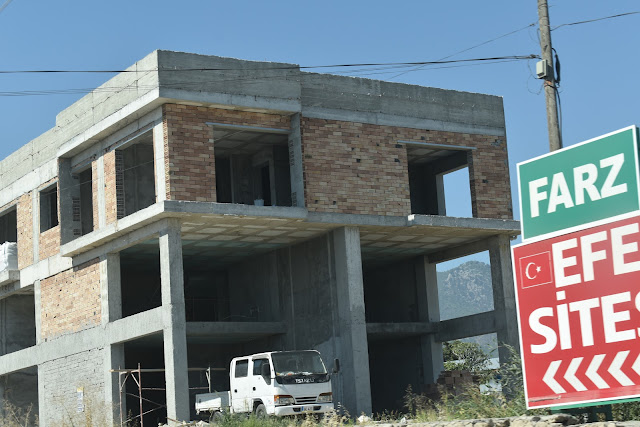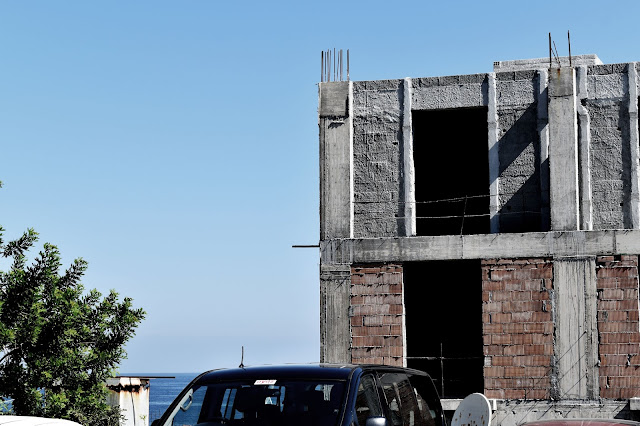Preparation: What am I doing in this shoot:
Carrying on from my previous shoot of Graffiti, I wanted to look into how war and conflict of a destructive world leaves a beautiful setting. In this Shoot I will be picturing the broken down and abandoned buildings of northern Cyprus. I will be doing this to present how war leaves a country destroyed and leaves a beautiful setting in a bad state, even many years later. In this shoot I will be in a moving car so will be challenged with blur, position and getting the right settings.
Research:
 Born in 1974, Amélie Labourdette live and work in Paris. Amelie Labourdette obtained her degree in Fine Art from the National Fine Art School of Nantes (Les Beaux-Arts). She believes that the landscape is part of our collective and individual memory. It reflects history, an era, a civilization, as well as our imagination. By questioning the notion of territory, by associating anthropological analysis with a subjective poetics of the image, she seeks to photographically unveil these underlying spaces.
Born in 1974, Amélie Labourdette live and work in Paris. Amelie Labourdette obtained her degree in Fine Art from the National Fine Art School of Nantes (Les Beaux-Arts). She believes that the landscape is part of our collective and individual memory. It reflects history, an era, a civilization, as well as our imagination. By questioning the notion of territory, by associating anthropological analysis with a subjective poetics of the image, she seeks to photographically unveil these underlying spaces.

In these images I like how the colours are simple and calm.The buildings are abandoned and left unfinished but Labourdette doesn't present the images in a harsh, scary way but peacefully surrounded by appealing landscapes. The photo to the left is an influence on my photos DSC_0064 to 68 on the contact sheet. However my version is not in an appealing setting and i could not take much time setting out a good position due to being in a car.
Contact Sheets:
My Best images:
Images that need improving:




When looking back on my photos I found that quite a lot of them had blurry parts, which is understandable for them being taken whilst moving. However the images above are my worst ones due to the main point being out of focus, the compositions or the reflection of the window showing.
AO2: Explore and select appropriate resources, media, materials, techniques and processes, reviewing and refining ideas as work develops.
 Editing:
Editing:
When i started to edit my first move was to crop images to remove blurs or use the clone stamp tool to get rid of reflections or glares.
After this I decided to experiment with my editing to make the pictures look more unnatural. I wanted to see how the photos would look with an edited pixel or blur on top. The first picture has a pixel effect but also has been turned black and white to make it look older, like the car in the picture. I then went on to change the curves and brightness etc, as shown to the left in the screenshot.
Other Edits:

In these photos I used curves and saturation to add contrast but make the photos seem de-saturated and dull. I also as another technique put a black and white filter on put the opacity on low. In some cases, like the graffiti picture I used dodging and burning to de-saturate the image apart from the graffiti.
AO3: Record ideas, observations and insights relevant to intentions, reflecting critically on work and progress.
I think my shoot went well and reflected my idea of a broken environment very well. My research of Amelie
Labourdette was helpful in my work as I edited my photos in order to give the same subtle clam look in terms of colours. The images came out as I expected, however I wish I had a place to park in order to take time in each one and get less blur. I wanted my photos to show a run down country- due to war- with poverty, to convey how to ugly damaged buildings are replacing a once beautiful landscape. I think my images have portrayed this in many ways. I also was happy to be able to show war in the society today through the graffiti and the Navy ship, which presents how conflict is still occurring, although not in that country but effects it.
AO1: Develop ideas through sustained and focused investigations informed by contextual and other
sources, demonstrating analytical and critical understanding.
My artist research is shown throughout my images, with similarities of broken houses without windows etc and then damaged houses with beautiful bushes and lots of green to contrast the grey toned buildings.
For example the influence is seen from Labourdettes photo on the left in my photo on the Right.

AO4: Present a personal and meaningful response that realises intentions and, where appropriate, makes connections between visual and other elements.
I believe that I have produced a strong series of images inspired by my research of environmental damage and the images of Labourdette's work. The final images I have edited present a destructive world in different ways. For example the first image below shows the difference of a abandoned and broken building to the busy lively restaurant behind it. Or another example is the Navy ship, showing how conflict destroys the planet.
Final Images:

 Progression:
Progression:
Progression:
To carry on with the permenant effects of war, i will be doing a shoot of the ruins of a Prisoner of war camp.





























































